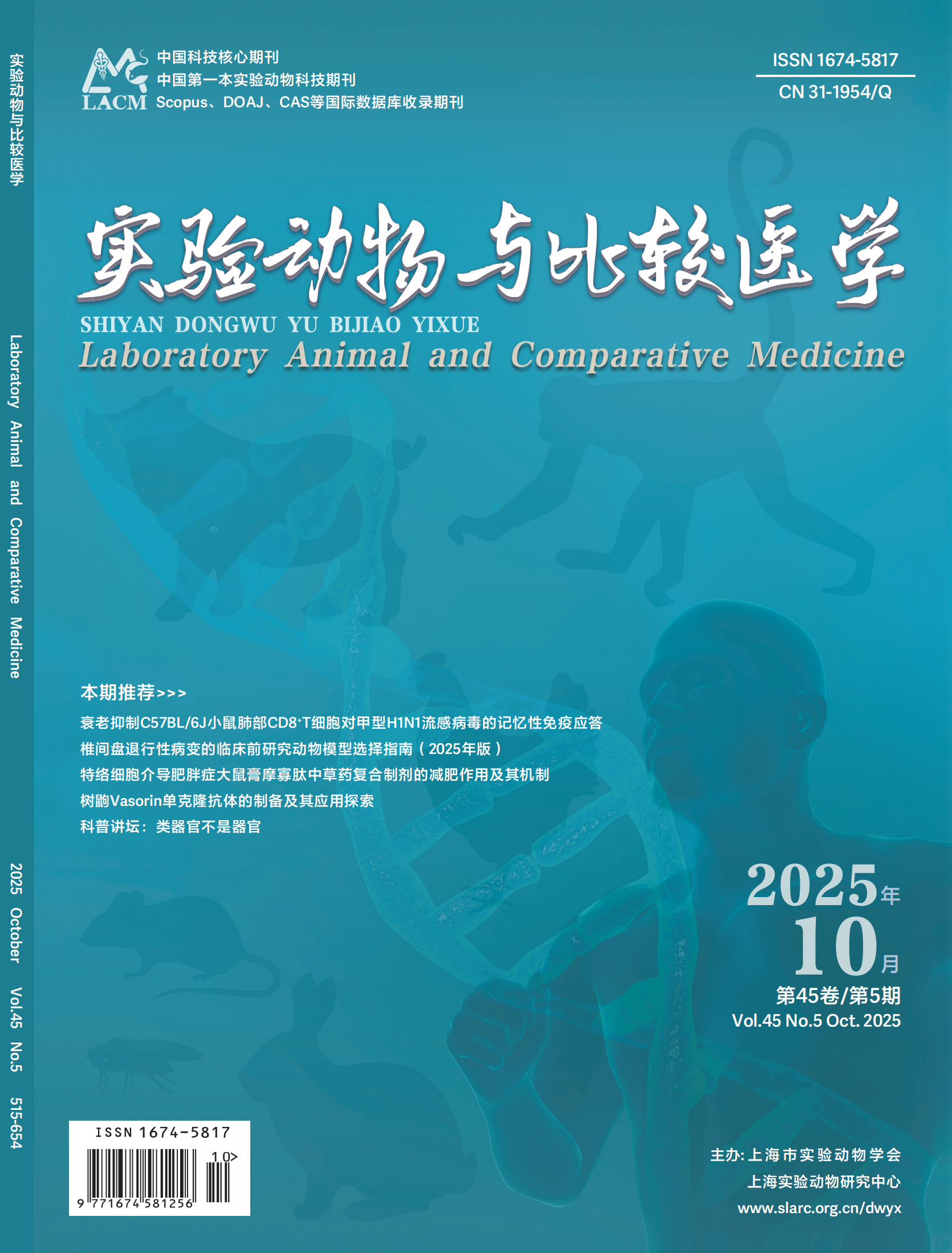Objective To evaluate the effects of intraperitoneal injection of sodium iodate on the physiological indexes and retinal histopathological characteristics of SD rats comprehensively. Methods A total of 64 rats were randomly divided into negative control group and model group, half male and half female. The model group was intraperitoneally injected with 6 mg/mL sodium iodate once at the dose of 10 mL/kg and the negative control group was injected with 10 mL/kg 0.9% NaCl once. The body weight of all surviving rats was detected on the day of injection (0 day) and the 2nd, 6th, 9th, 13th, 16th, 20th, 23rd, 27th, 29th, 36th, 43rd, 50th and 57th days after injection. On the 3rd, 7th, 21st, 28th, 41st and 62nd days after injection, the rats were randomly selected (12 rats in each group on the 28th day, and 4 rats in each group at other time points, those in each group were half male and half female) for serum biochemical indexes detection. The organs were dissected and weighed, and then the main organs and tissues were stained with HE, and the eyes were stained with HE and TUNEL. Blood routine indexes were detected on the 28th and 62nd day after injection. Results After injection of sodium iodate, 88% of the rats in the model group had transient loose stools. During the observation period, the body weight of the rats increased slightly and was more obvious in male rats. On the 28th day after injection, compared with the negative control group, the red blood cell volume (RDW) of female rats and blood urea nitrogen (BUN), reticulocyte count (Retic#) and reticulocyte percentage (Retic%) of male rats in the model group increased significantly (all P<0.05). The white blood cell (WBC), red blood cell (RBC), hemoglobin (HGB) and hematocrit (HCT) of male and female rats showed decreasing trends, but there were no significant differences between the two groups (all P >0.05). The thymus weight and coefficient of male rats in the model group were smaller than those in the negative control group except for the 7th day after injection, but there were no significant differences between the two groups (all P >0.05). Histopathological examination showed that the retina of the model group gradually developed from wavy changes to abnormal electrocardiogram (ECG)-like changes, with disordered arrangement of each layer, focal thinning of the outer nuclear layer, and apoptosis of the outer nuclear layer of the retina. The incidence of lesions, lesion score and the number of apoptotic cells in the model group were significantly higher than or more than those in the negative control group at the same time, and the difference between the groups on the 28th day was statistically significant (all P<0.01). Conclusion In addition to retinal degeneration in rats, intraperitoneal injection of sodium iodate also had a certain degree of influence on serum biochemical and blood routine indexes, and also showed a slight slow growth of body weight and transient changes in fecal traits. Therefore, when using this model to evaluate drug safety, the effects of modeling reagents on animals should be paid to attention.

